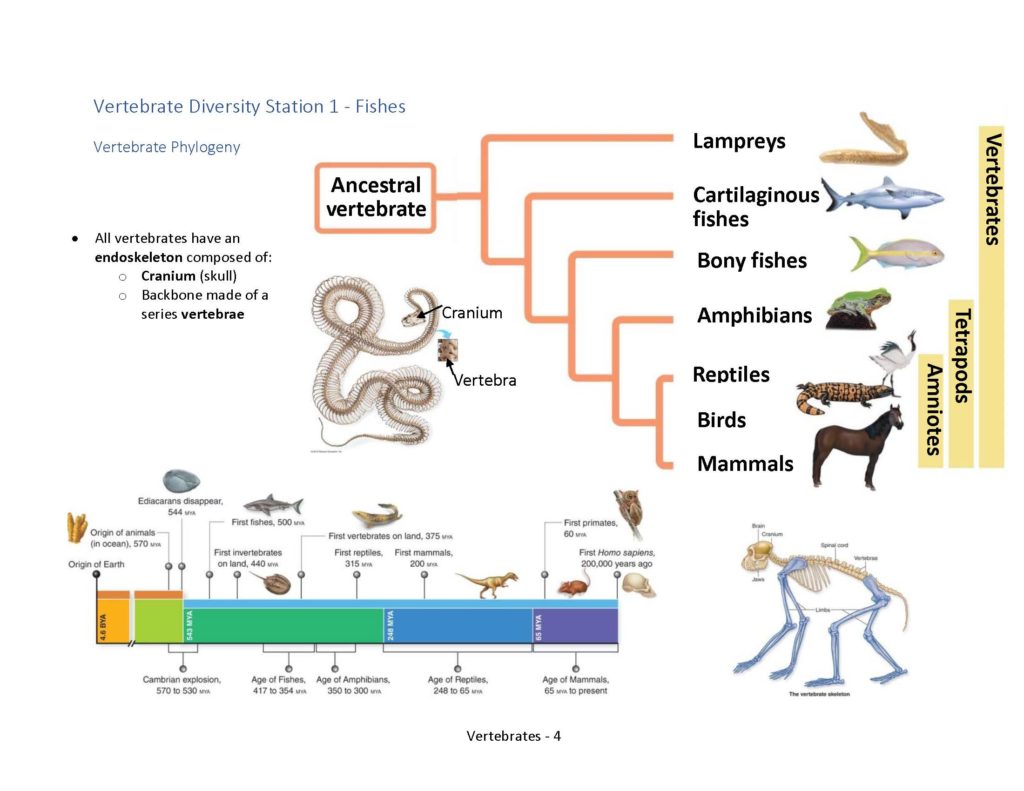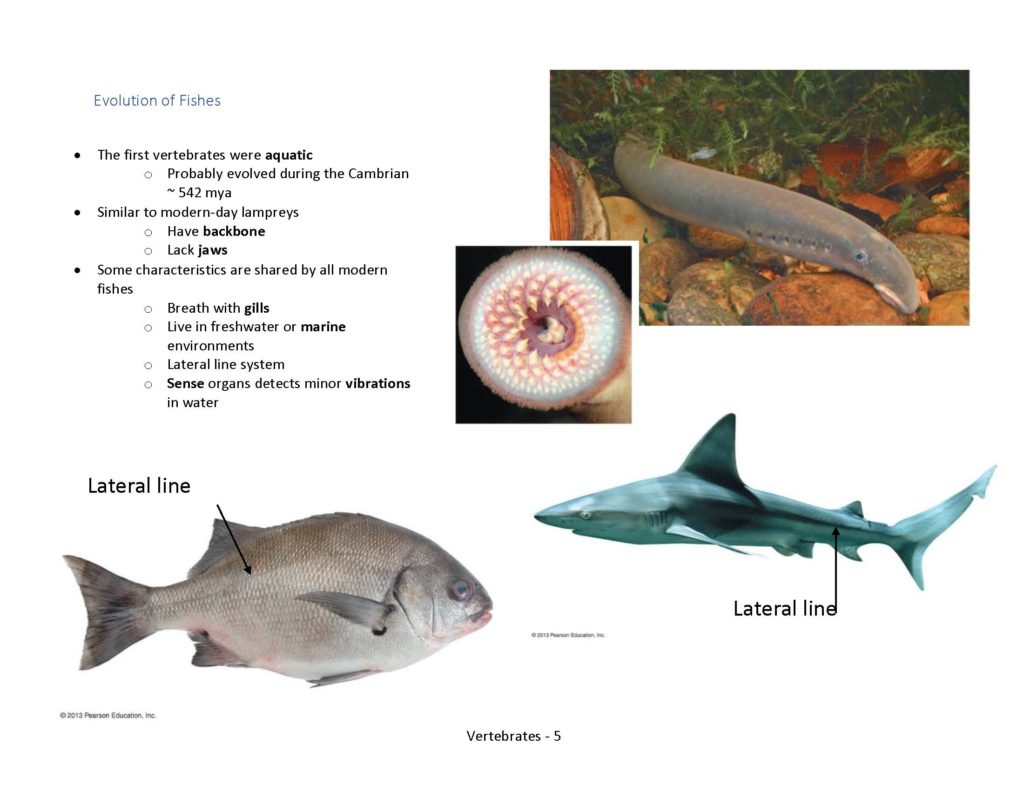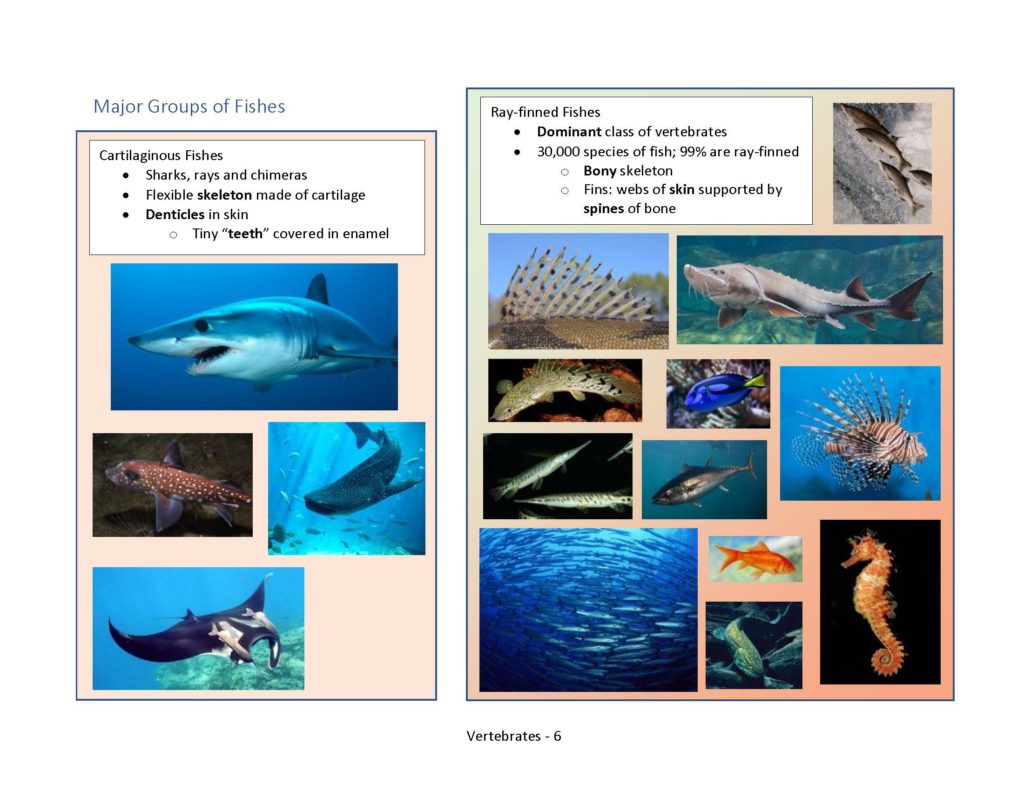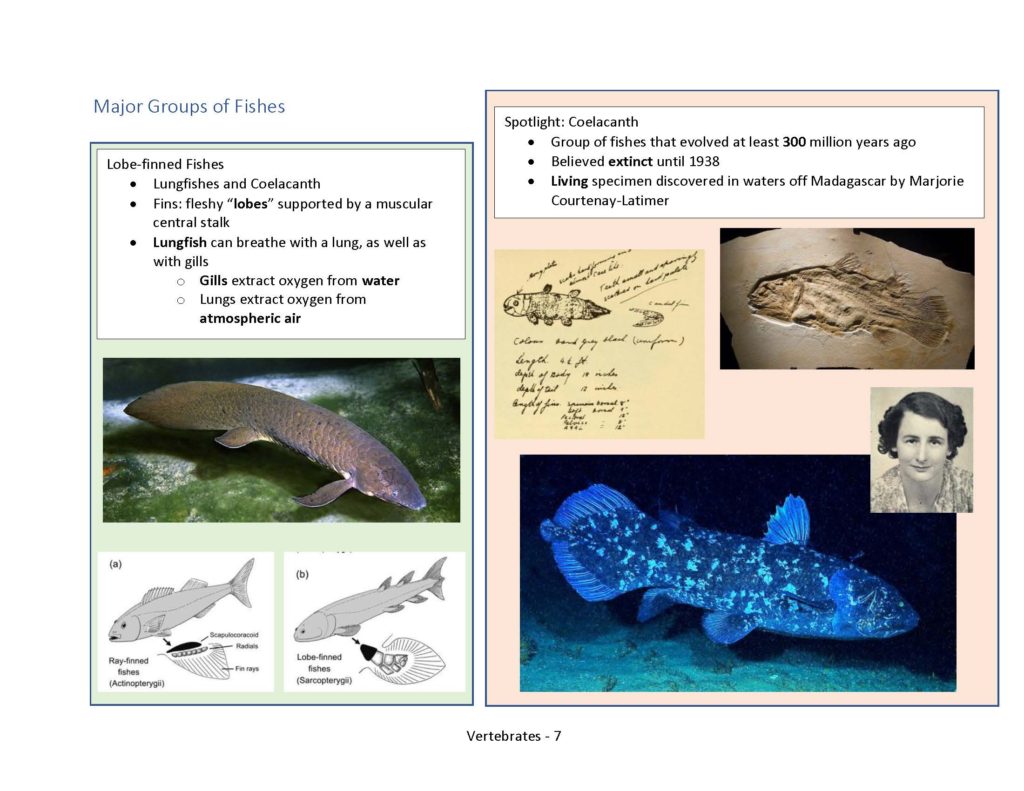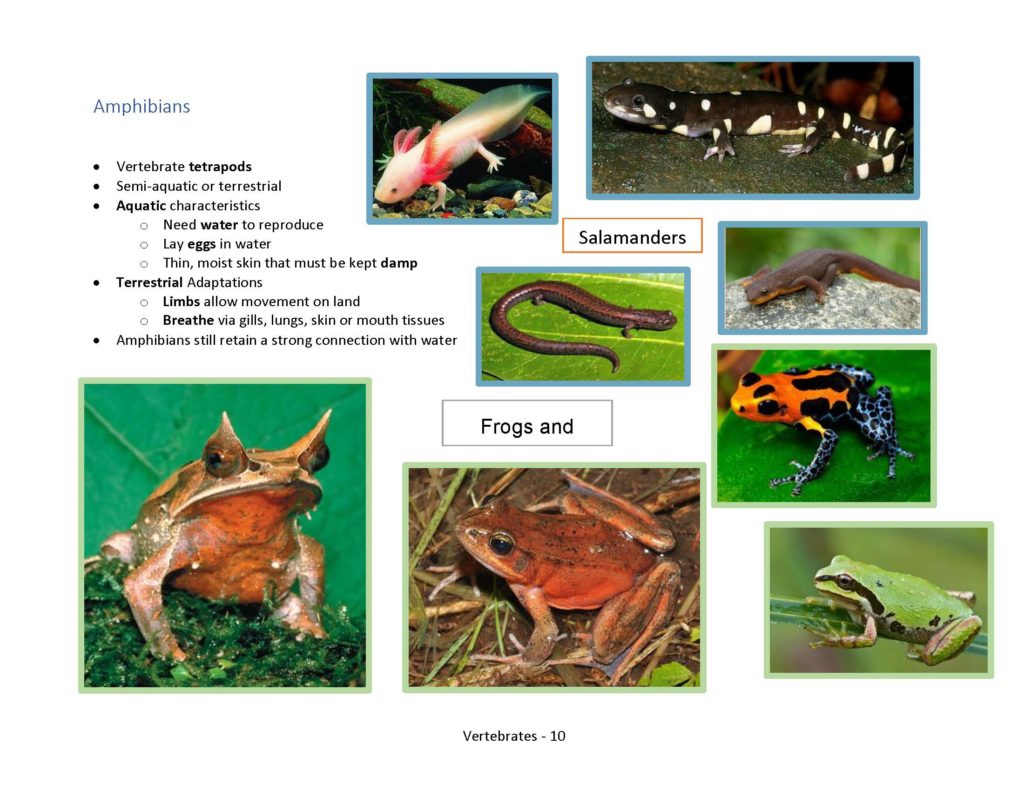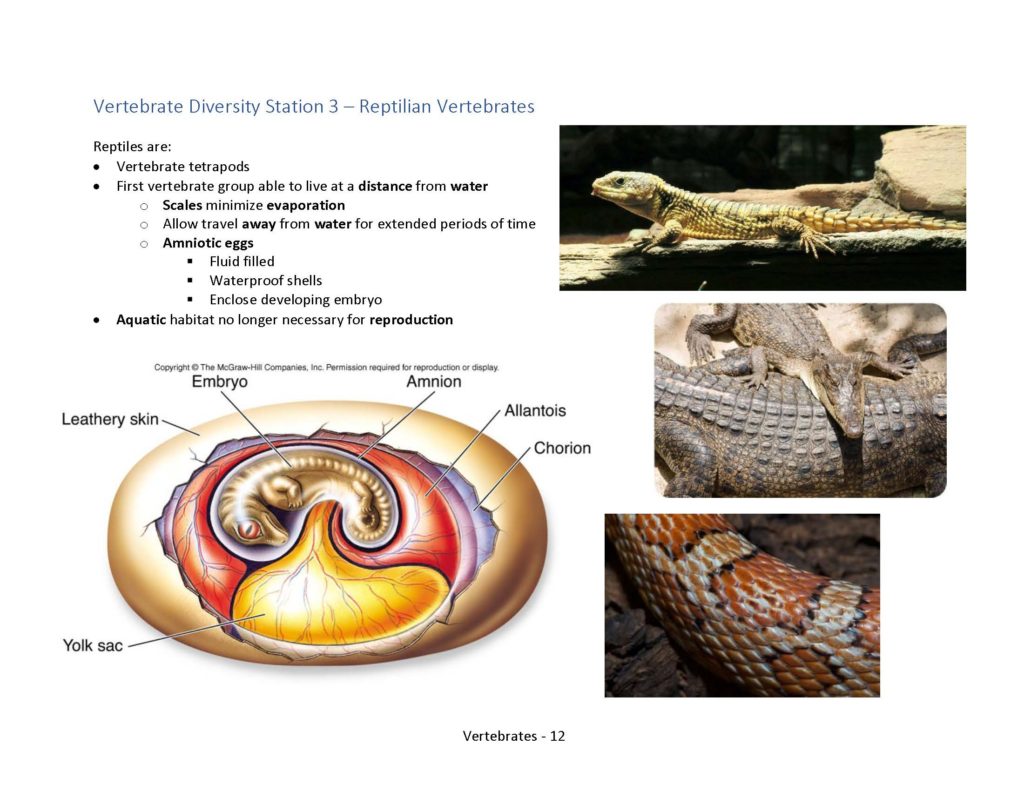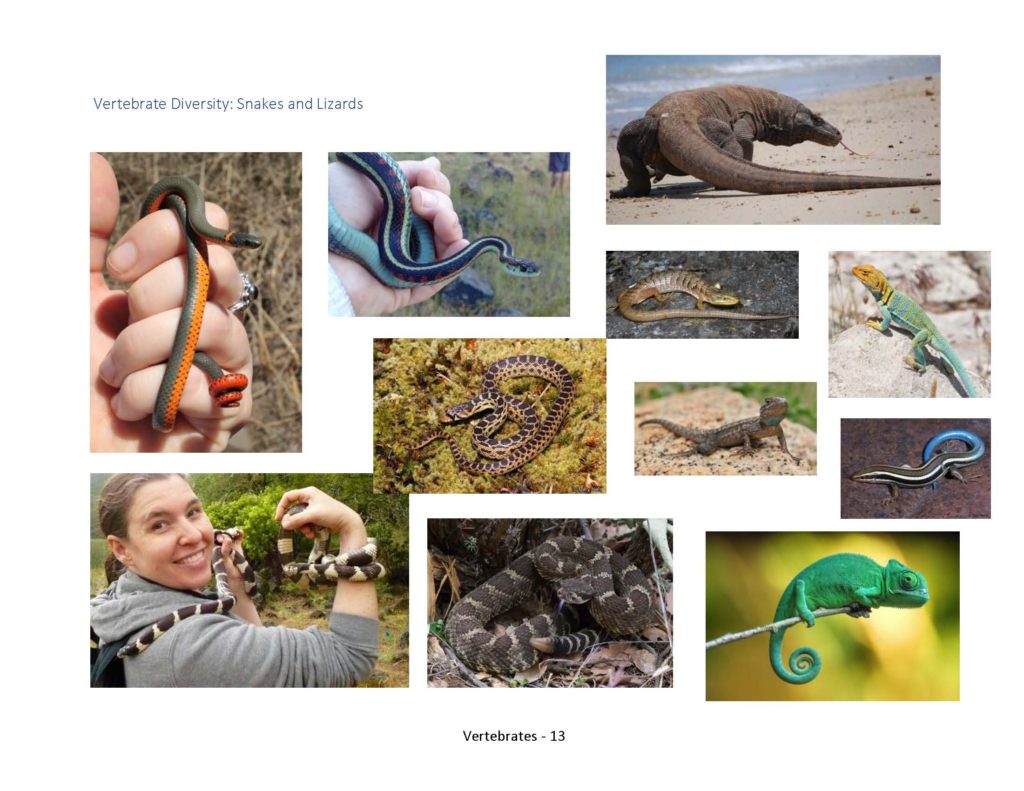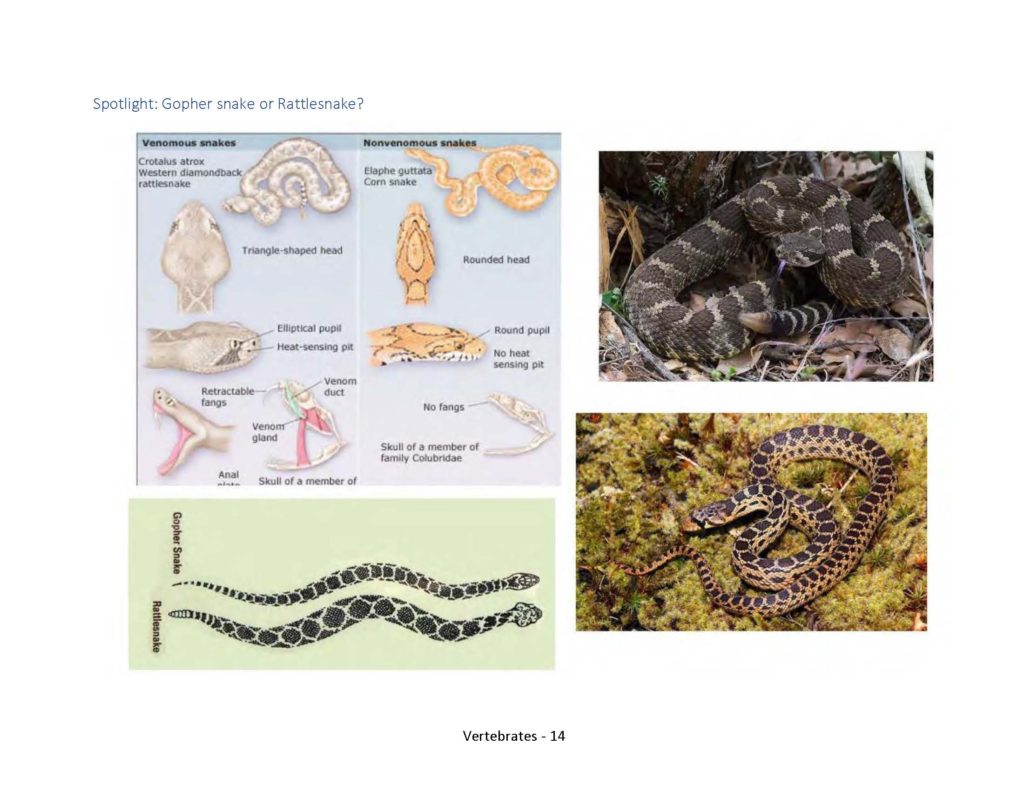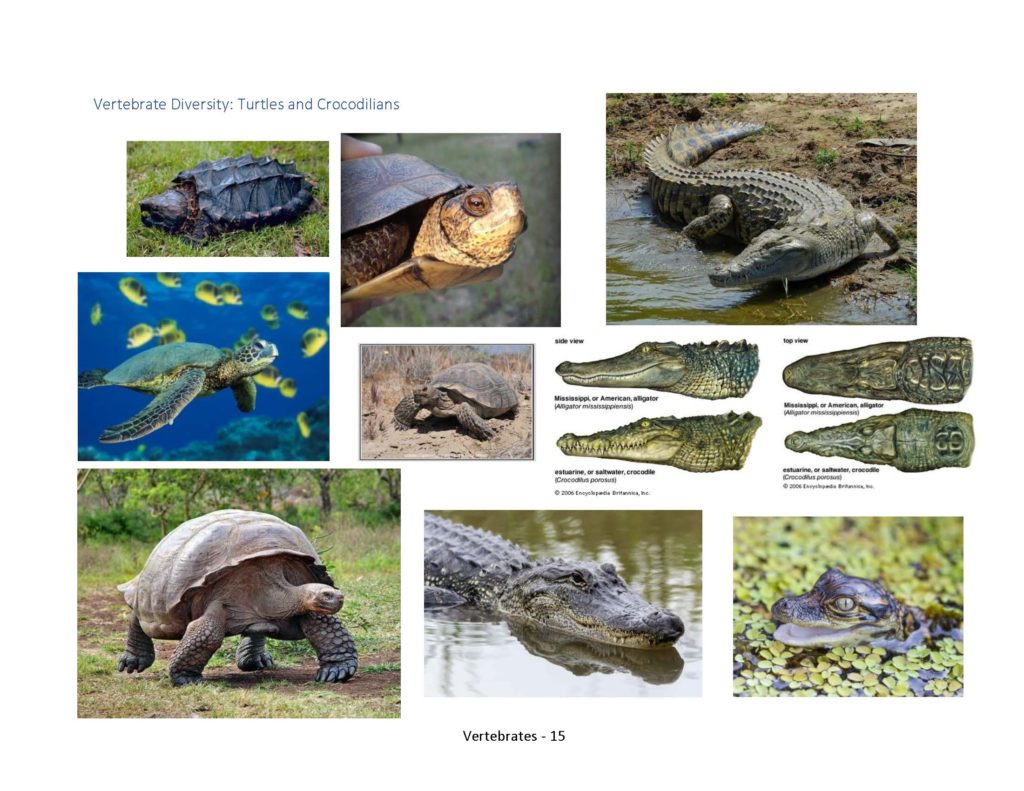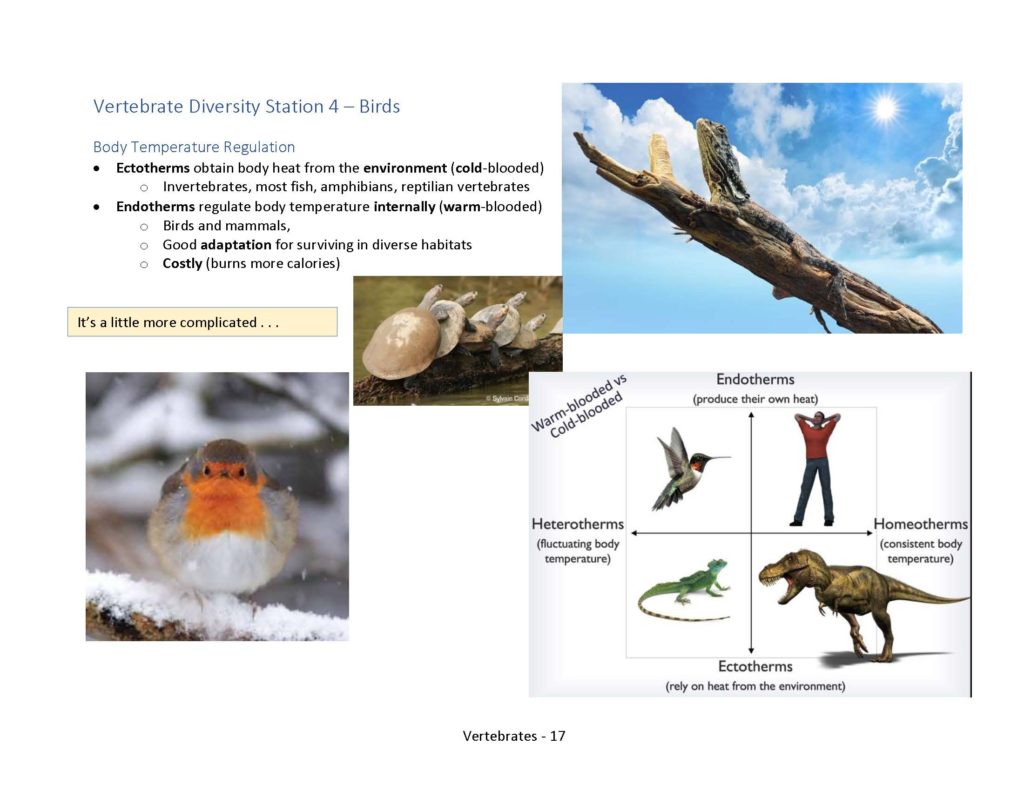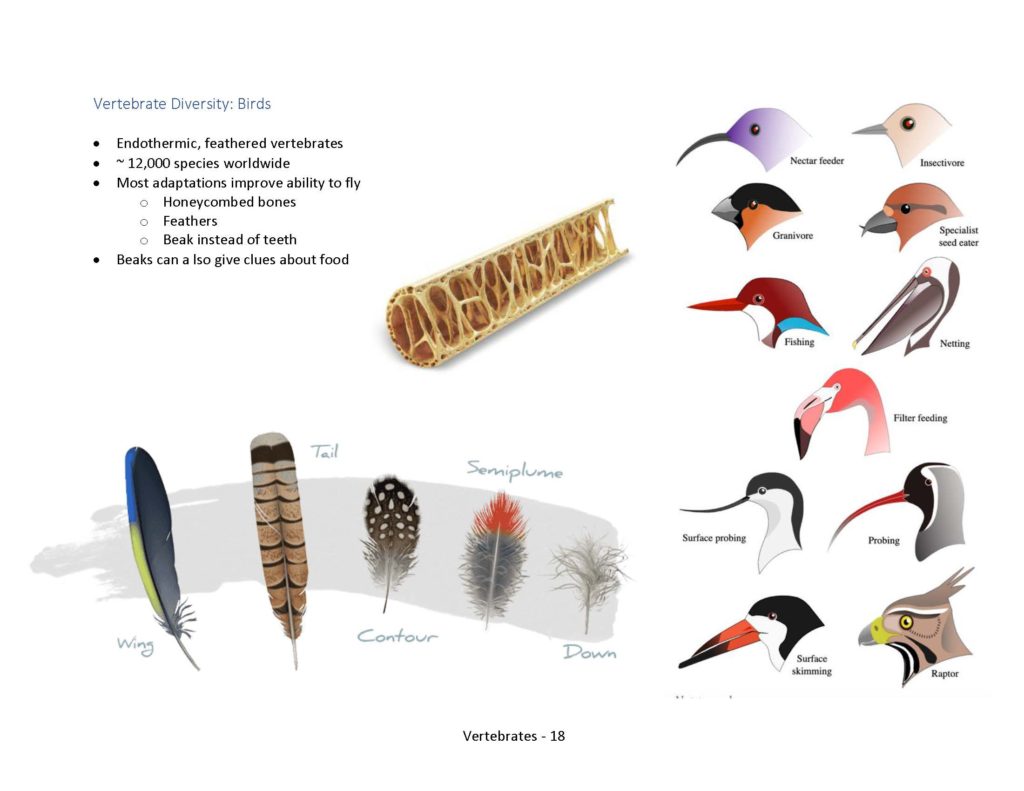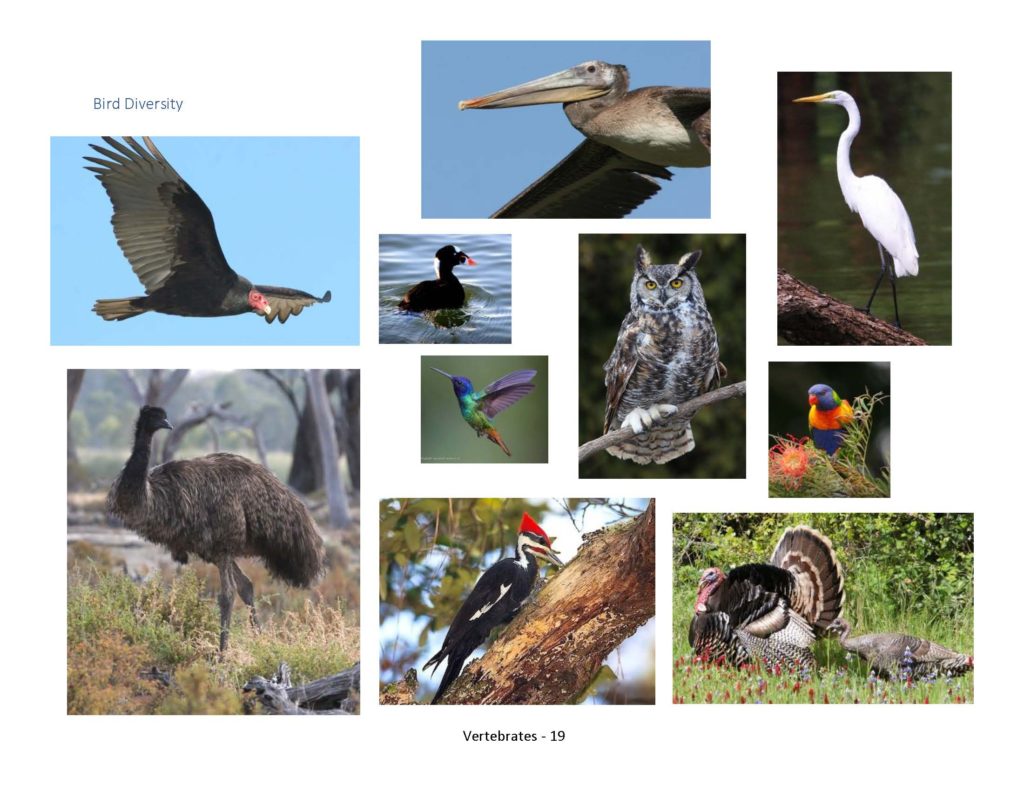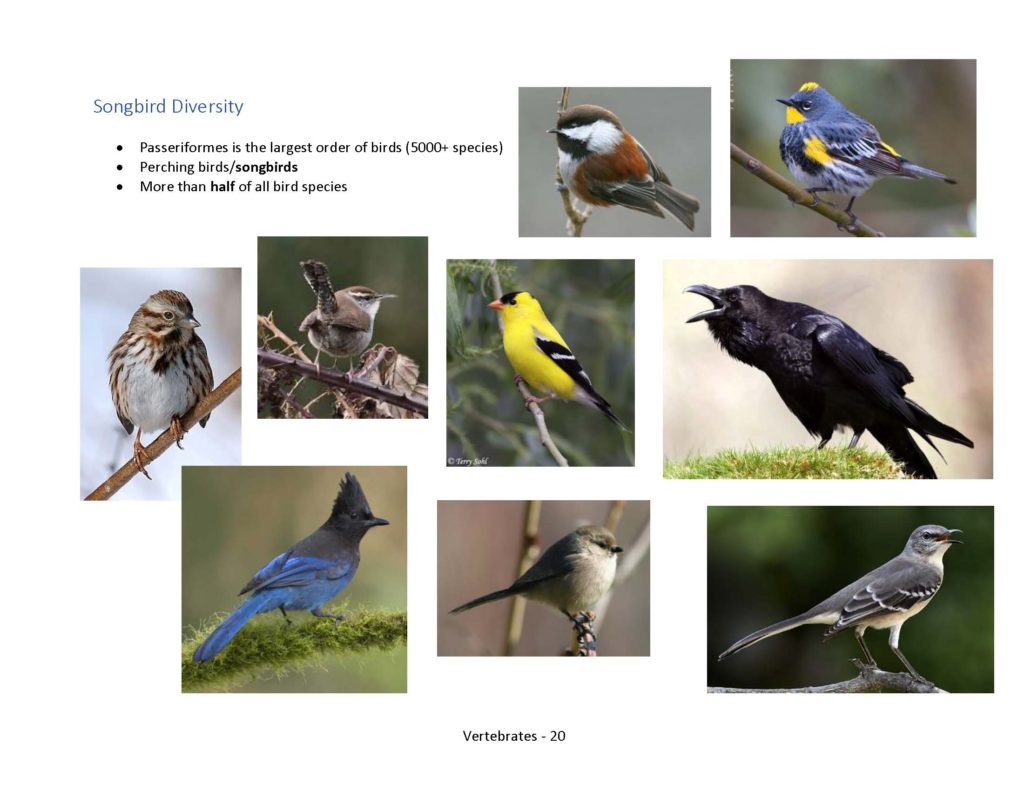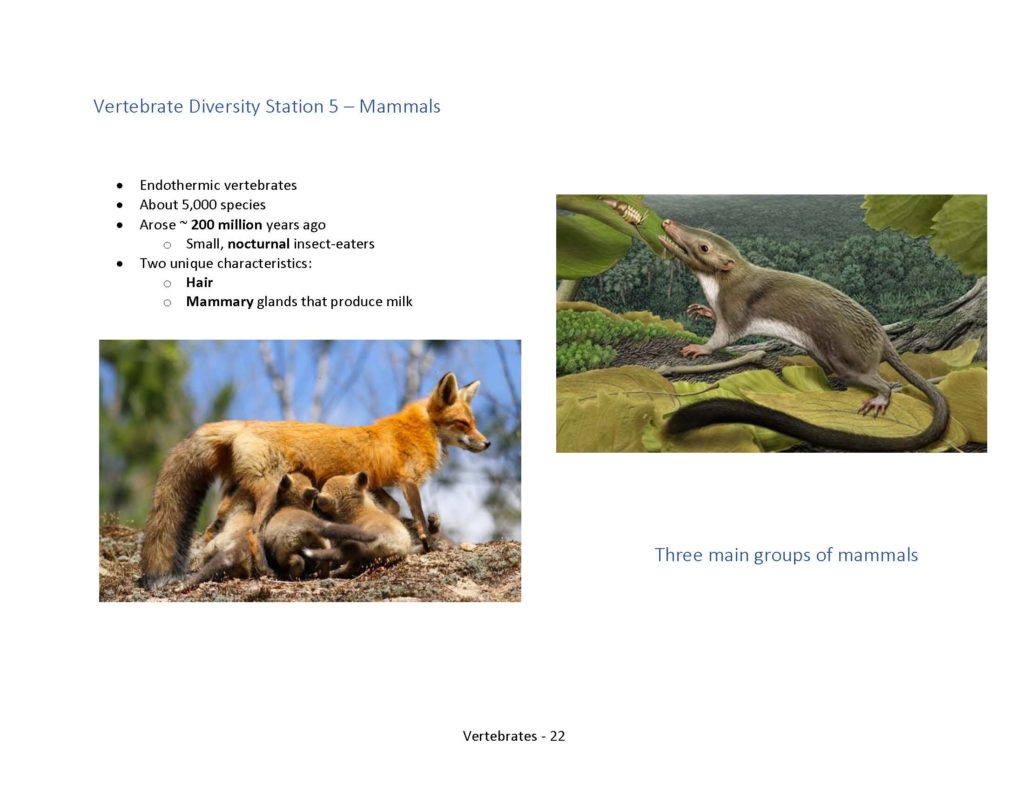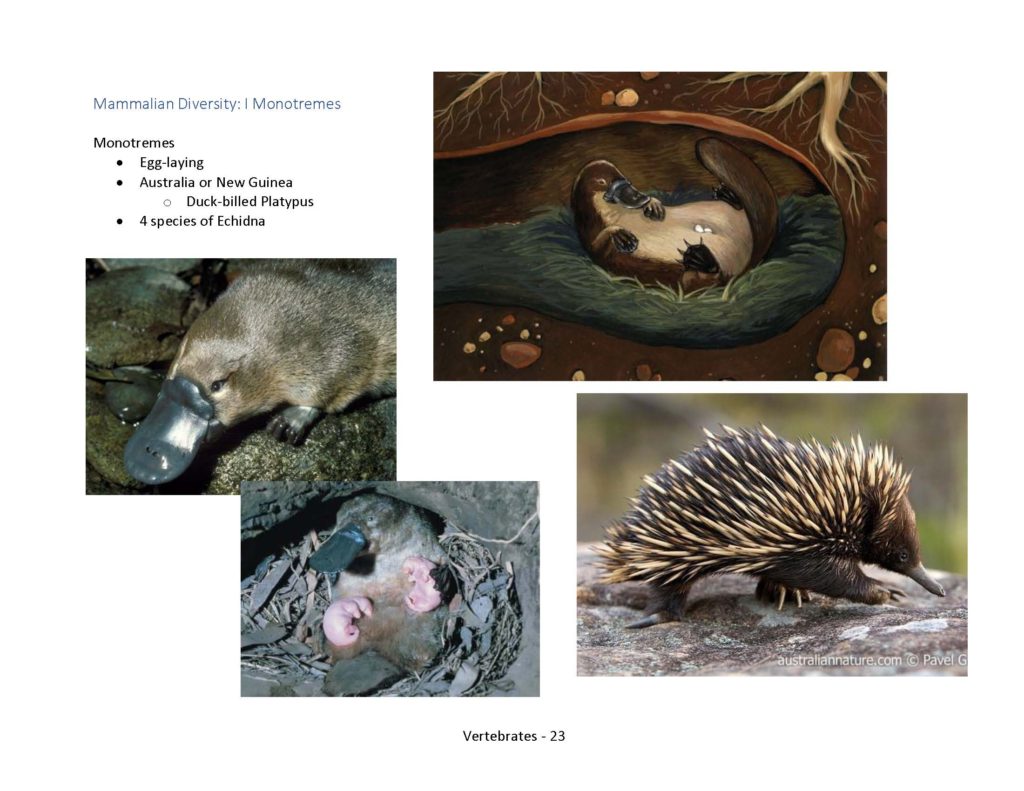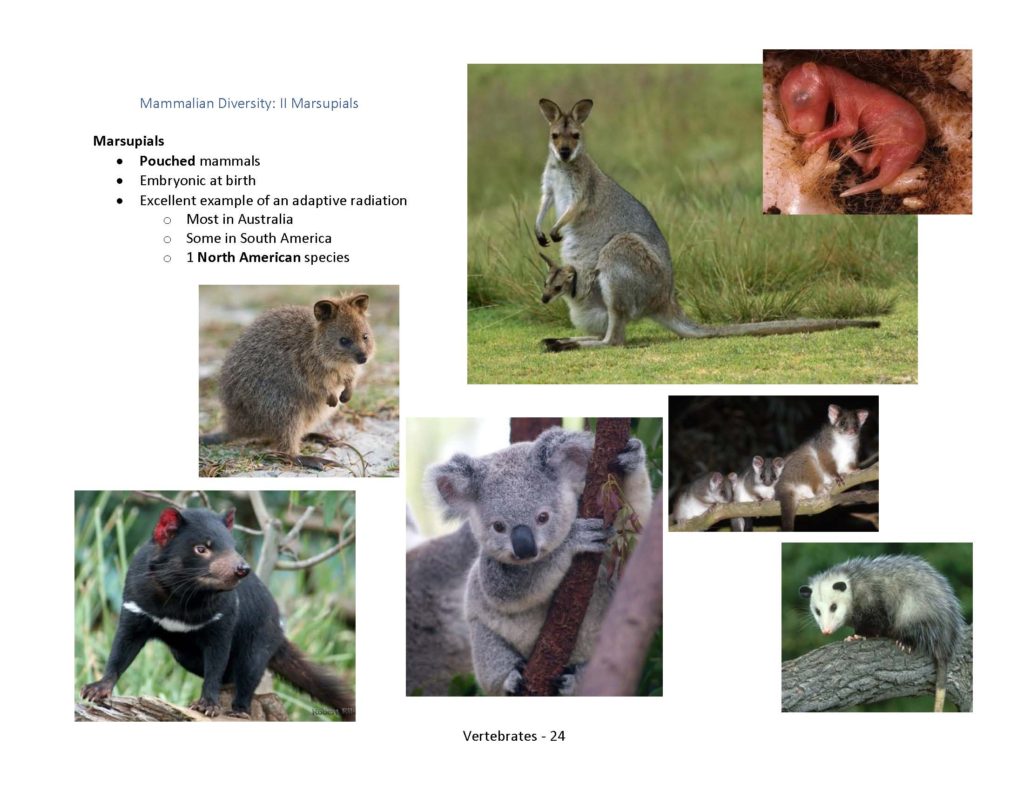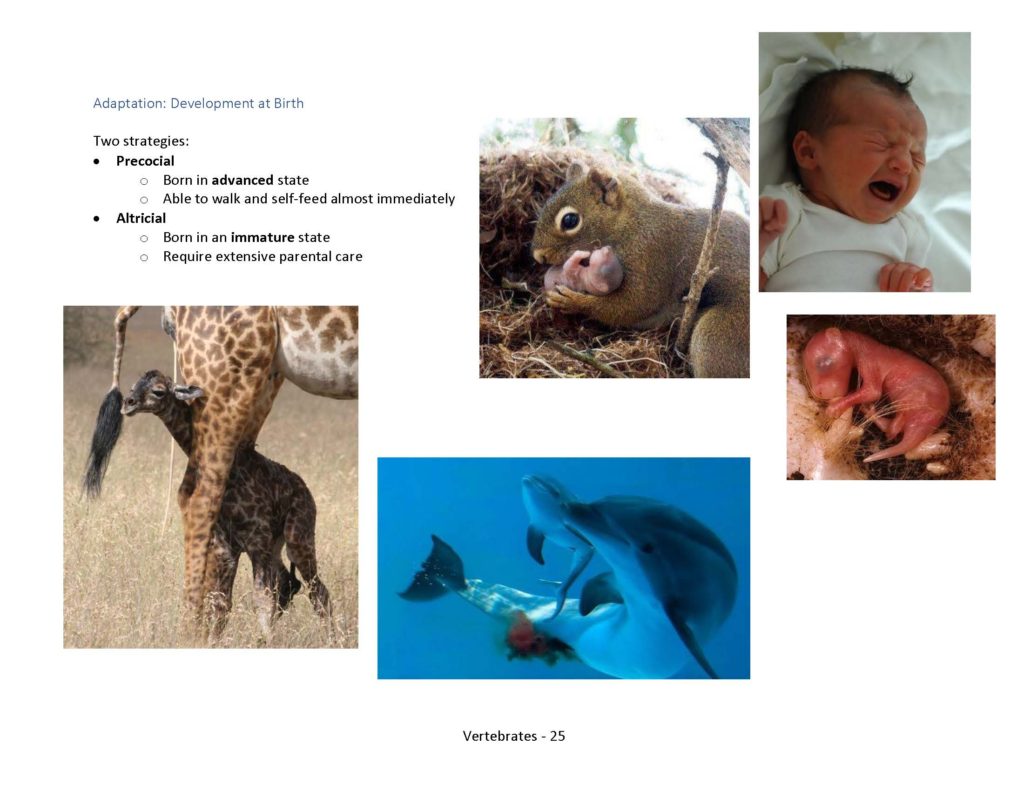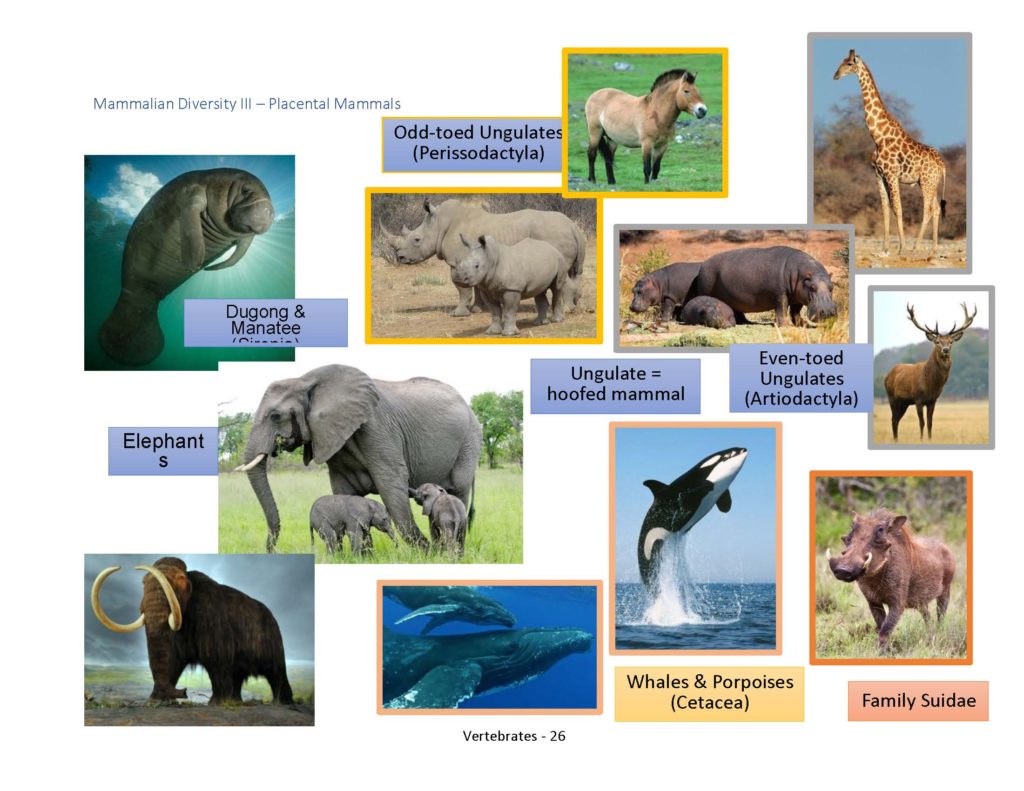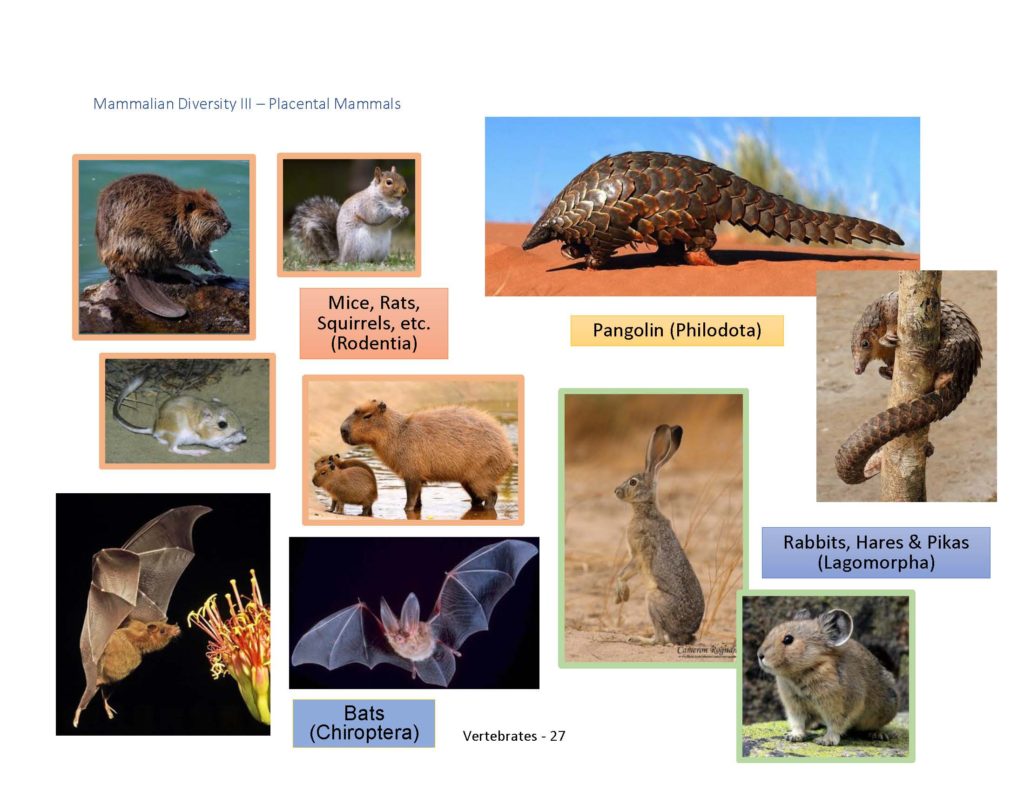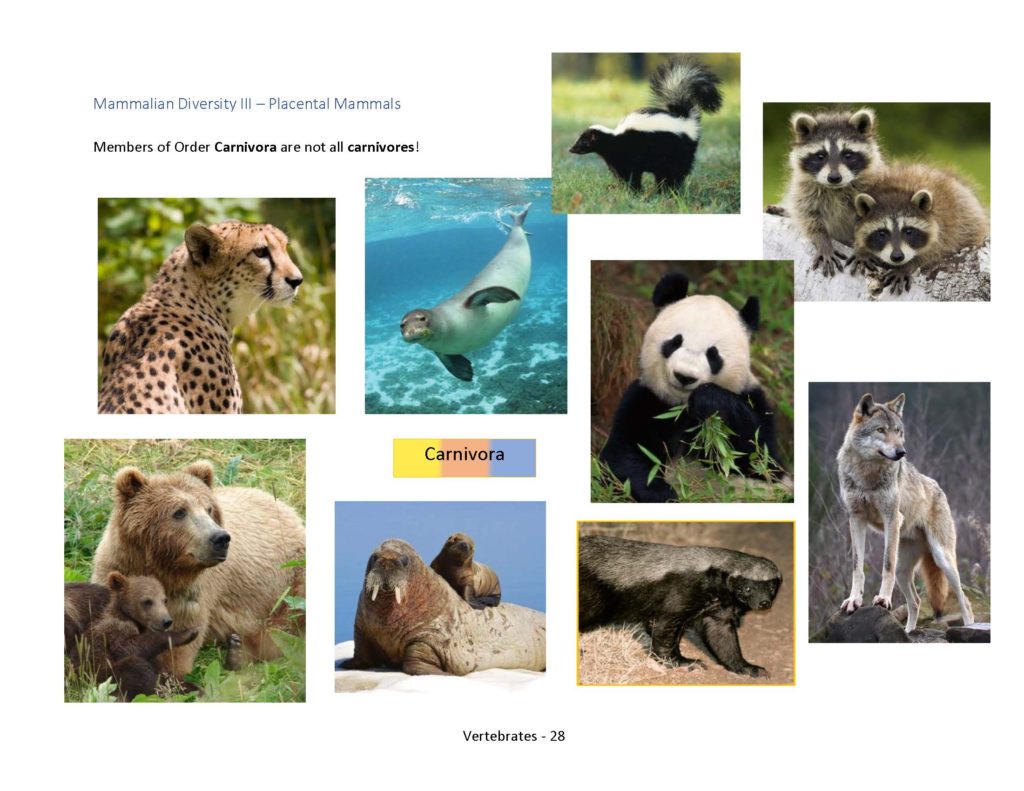Examination of Vertebrate Groups
Vertebrates live in a wide variety of habitats and have diverse feeding behaviors. The overall shape and form of the animal will reflect its adaptation to the environmental conditions in which it lives. However, this divergence in habitat use and feeding behavior usually occurs through the modification of existing structures rather than by developing completely new structures. Species that differ in their use of habitat or food resources will tend to possess modified homologous structures.
The “stations” below will allow you to examine vertebrate divergence in skeletal structure and limb morphology, mammal divergence in tooth morphology, and bird divergence in beak and foot morphology. Keep in mind that these structures are usually formed by the modification (or loss) of existing structures rather than the origination of new ones.
Diversity of Fish Body Plans
- Agnathans
- Hagfishes and lampreys
- Major characteristics:
- Lack jaws
- Paired pelvic and pectoral fins
- Bone absent
- Chondrichthyes
- Sharks, rays, and relatives
- Major characteristics
- Tooth-like placoid scales
- Strap-like gills
- Cartilaginous skeleton
- Osteichthyes
- Bony fishes
- Major characteristics
- Gills covered with bony operculum
- Usually well-ossified endoskeleton
- Swim bladder or simple lungs usually present
- Two major lineages:
- Ray-finned fishes (Actinopterygii)
- Fin musculature in body wall
- Highly mobile (kinetic) skulls
- Homocercal tail (superficial symmetry)
- Lobe-finned fishes (Sarcopterygii)
- Fin musculature extends into fins
- Less kinetic skulls
- Diphercercal (symmetrical) tails
- Ray-finned fishes (Actinopterygii)
- Describe at least two adaptations fishes possess that allow them to live successfully in aquatic habitats
- Examine the fishes pictured below.
- How do the skeletons of these two animals differ?
- What type of body symmetry do they exhibit?
- What new adaptations do the lobe-finned fishes have, that ray-finned fishes do not?
- Why do you think many people refer to the Coelacanth as a “living fossil?”

Transition to Land
Our understanding of the way in which fishes evolved into animals that could survive in terrestrial habitats is informed by a remarkable array of transitional fossils. You will investigate these groups with this interactive online tool: https://media.hhmi.org/biointeractive/click/great-transitions/

- Tetrapods are _______. Examples of tetrapods include:
- Tetrapods first appear in the fossil record ________ million years ago.
- Charles Darwin predicted that tetrapods evolved from _____________. What observation leads to that hypothesis?
- What evidence would you expect to find to support that hypothesis? What age rocks would you look in and why?
- Fish use _________ to breathe underwater. (However, many species of lobe-finned fishes that evolved during the Devonian period also had __________)
- In fossils, what anatomical evidence indicates that gills were present?
- Tetrapods use __________ to breathe. Do any modern tetrapods have gills? Explain.
- Why is a sturdy ribcage important for tetrapods?
- What is homology? To what are fins homologous?
- Most modern tetrapods have ________ digits on front limbs and _______ digits on back limbs, although some species have fewer. How does this number compare to the number of digits on the limbs of transitional fossil forms?
- Why do many of the transitional fossils between fish and tetrapods have flat heads?
- How did the anatomy of the shoulder and head change during tetrapod evolution?
- _________________ and _______________ are fossil species have characteristics unique to fish as well as characteristics found in fish and tetrapods. Describe the characteristics of lobe-finned fish that are similar to those of tetrapods.
- Which lobe-finned fish is alive today? __________________
- Acanthostega and Icythyostega have been called fish-like tetrapods. Explain why they are described as such and describe the environment in which they probably lived.
- Why is Tiktaalik such an important transitional fossil?
- __________________ and _____________________ are early tetrapods that do not have features unique to fish. Describe how these two species differ anatomically and what that means about where they each lived.
Amphibians
As adults, amphibians live in a variety of aquatic and terrestrial habitats, but these small vertebrates continue to need water, or a moist environment, to reproduce. The species in this group can breathe and absorb water through their very thin skin. All extant amphibians are part of the Lissamphibia:
- Order Urodela (also known as Caudata)
- Salamanders and newts
- Major characteristics
- Tail in adult
- Mode of locomotion: walk or swim
- Carnivorous
- Order Anura
- Frogs and toads
- Major characteristics
- No tail in adult
- Mode of locomotion: saltation (hopping)
- Juvenile diet mostly herbivorous; Adult diet, carnivorous
- Order Gymnophiona
- Caecillians
- Major characteristics
- Limbless
- Fossorial
- Carnivorous
- What are the major groups of amphibians?
- Explain how their reproductive strategy dictates the habitats in which they are able to live.
- What is the major characteristic that distinguishes the Caecilians from the other two orders?
Reptilian Vertebrates
Reptilian vertebrates have some key adaptations that allow them to reproduce and live their lives at farther distances from water than amphibians. There are three major orders:
- Testudines (turtles)
- Lepidosauria (lizards and snakes and the Tuatara)
- Crocodilia
- Describe two adaptations that these animals possess that allow reptiles to live away from water
- List two characteristics that allow you to tell the difference between venomous rattlesnakes and non-venomous gopher snakes
- List two characteristics that allow you to tell the difference between an alligator and a crocodile.
- Question: Why are we making all the fuss about the name of this group and referring to it as ‘reptilian’ instead of just calling them reptiles?
- Does grouping these organisms into reptiles make evolutionary sense? Why/Why not??
Birds
Class Aves (birds) are best known for some of the adaptations they possess for flight, which allow them to exploit resources in many ways that are not available to our previous vertebrate groups.
- Birds are the first group of endothermic animals that we have encountered today.
- Describe the differences between ectotherms and endotherms.
- Why is endothermy advantageous?
- List three adaptations that allow birds to fly
- Which group of birds is the most diverse/has the greatest number of species?
Mammals
The final group of vertebrates we will investigate are the mammals: endothermic animals with fur, who provide milk to their offspring. There are three large-scale groups:
- Monotremes – egg laying mammals, only 5 extant species
- Marsupials – a group of diverse pouched mammals, almost all of which live in the Southern Hemisphere
- Placental mammals – comprises the vast majority of extant mammals
- What are the two adaptations that are unique to mammals?
- Look at the photos of the pangolin.
- Does this animal appear to belong with the others in this category? Why or why not?
- What structures on your own body are similar, in terms of the material from which they are composed, to the pangolin’s scales?
- List the three groups of mammals
- Give an example of each group
